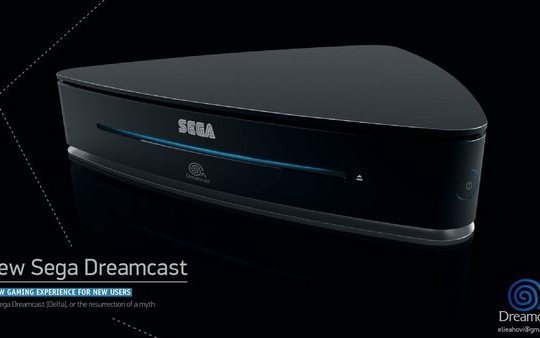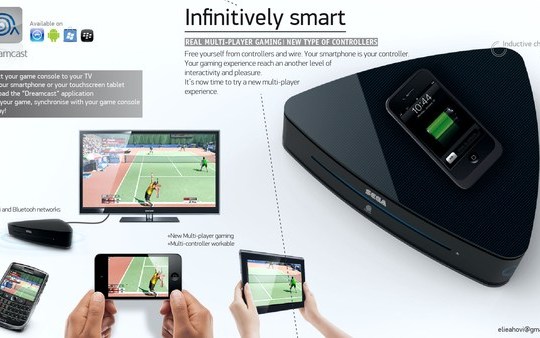When it comes to videogame consoles, the Sega Dreamcast was gone way too soon. Despite classic games like Jet Set Radio Future and Shemue or it's inventive and hilarious "It's thinking" campaign, the console was only around for a mere two years before vanishing. Releasing in September of 1999, Sega's console had the stiffest competition, Sony's Playstation 2.Then, Microsoft's Xbox and Nintendo's Gamecube were released shortly after.
Sega's console lost momentum quickly and the company decided to discontinue manufacturing the console in March of 2001 and become an software only company. Though the "cult console" is long gone, it's still talked about today and has now inspired Product Design student Elie Ahovi to revive the console with his new design called, the Sega Dreamcast Delta.

Recording the entire design process on his website Elie goes and shows us how the Dreamcast can come back with this futuristic, yet feasible revival. It already starts off as a revolutionary idea thanks to one of the coolest aspects of this concept; The controller. Controllers are very pricey and cost as much as the games you want to play. So why not just use something that is never further than an arms length from you: your cellphone or tablet.
Just about everyone has a one of those devices and just about all of them are capable of playing videogames on them. We just had Grand Theft Auto III released on them and they run great and control just fine. In his concept, he illustrates how these devices would be used for the controller. It's a simple three step process: Download the "Dreamcast" application on your phone or tablet, select the game, sync your phone with the console, and play. Of course, there will also be the option to purchase wired and wireless controllers for casual and hardcore gamers.
Won't that drain your batter life exponentially though? Some of us simply run Twitter and play a few games sparingly throughout the day which still requires us to have an outlet nearby for charging. It's a problem we all have and constantly playing with the controller or tablet will only amplify that. That issue was also taken into account when designing the console and Elie has developed a solution for it. The top of the console is an inductive charging station. You've seen these in the cell phone section of your local electronic stores in the form of charging pads. When you're done playing, place the device on top of the console and let it charge–removing the hassle of of wrapping wires and keeping everything organized.

When it comes to software, they will all be purchased online and downloaded to the console, and based off his design the screen on the device will be utilized as well. This aspect is similar to that of the Dreamcast's Visual Memory Unit (VMU). It was more than just a storage device, it was also something that you could use to play games with. This came in handy specifically with sports titles for example.
The plans for the next play would show up on the VMU and not the TV screen, preventing your friend next to you from seeing your next move. With technology today, the possibility of drawing up your own plans on the fly is almost a given. It was a revolutionary idea that no company has really utilized since. If anything, the Wii U may have something to this affect since it's the only console that has a touch screen implemented into it's hardware. It took 11 years for us to see this again.
This could change online play as well. Playing a game like Quarrel with a friend on his iPhone while playing against another on his Android device while you play on your console could really be the next step in console gaming. We've already got online gaming with phones and consoles, why not merge them?
He lists more details such a backwards compatibility of older titles thanks to the disc drive, it's airflow, how the shape of the console helps with port accessibility, and other technical details but one aspect that carries more significance is the consoles name.
The name Delta is the number '4' in Greek. That's where he got the design of the console from. He then takes it a step further and says that the number means to move forward i the market.
"Nowadays, the names are around the number 3 (PS3, Xbox 360, Nintendo "Wii" 3 letters…). I wanted the Dreamcast [Delta] to be the fisrt one of a new generation; just like in the past…."
If you want to see more of Elie Ahovi's work, head to his website here.